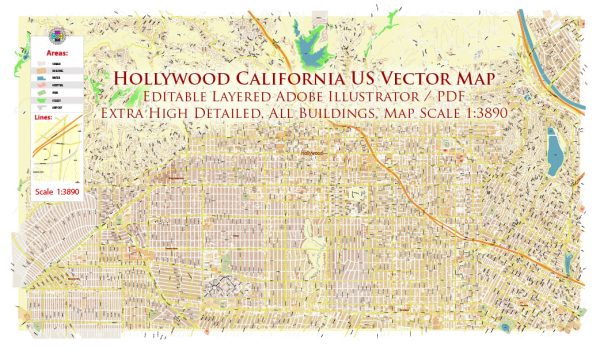Hollywood, a district located in the city of Los Angeles, California, has a rich history of urban development that has played a significant role in shaping its iconic status in the world of entertainment. Here’s an overview of Hollywood’s history of urban development:
- Early Years (Late 19th Century):
- Hollywood was initially a small independent community and was officially established in 1887 by Horace and Daeida Wilcox.
- The area was characterized by citrus farms, open space, and a small population.
- Early Film Industry Influence (Early 20th Century):
- The development of Hollywood as a major entertainment hub began in the early 1900s when filmmakers, seeking to escape the strict control of Thomas Edison’s Motion Picture Patents Company on the East Coast, moved to the West Coast.
- Hollywood’s favorable climate, diverse landscapes, and proximity to various settings (mountains, beaches, deserts) made it an ideal location for film production.
- Film studios, including Paramount, Warner Bros., and Universal, established their presence in Hollywood, contributing to its growth.
- The Rise of the Studio System (1920s-1940s):
- The 1920s saw the consolidation of the film industry into a studio system, with major studios controlling all aspects of production, distribution, and exhibition.
- Hollywood became synonymous with the American film industry during this period, and iconic structures like the Hollywood Sign (originally “Hollywoodland”) were erected for promotional purposes.
- The Golden Age of Hollywood (1930s-1950s):
- Hollywood experienced unprecedented growth during the Golden Age, with the production of numerous classic films and the rise of legendary stars.
- The Hollywood Boulevard commercial district flourished, featuring theaters, hotels, and entertainment venues, making it a bustling center for both the film industry and tourism.
- Decline and Urban Challenges (1960s-1980s):
- Hollywood faced urban challenges in the form of crime, suburbanization, and the decline of the studio system.
- The Hollywood Walk of Fame was established in the 1960s as a way to revitalize the area, honoring achievements in the entertainment industry.
- Revitalization and Gentrification (1990s-Present):
- In the 1990s, efforts were made to revitalize Hollywood, focusing on urban renewal projects, street improvements, and the restoration of historic theaters.
- The construction of the Hollywood & Highland Center, featuring the Dolby Theatre (home of the Academy Awards), became a major development in the area.
- Gentrification brought a mix of upscale housing, trendy restaurants, and entertainment venues to the district.
- Cultural and Tourism Hub (Present):
- Hollywood has evolved into a cultural and tourism hub, attracting visitors from around the world.
- It remains a symbol of the American entertainment industry, with its famous landmarks, theaters, and the iconic Hollywood Sign.
Despite its evolution, Hollywood continues to grapple with urban challenges such as traffic congestion, homelessness, and ongoing efforts to balance historical preservation with modern development.


 Author: Kirill Shrayber, Ph.D.
Author: Kirill Shrayber, Ph.D.